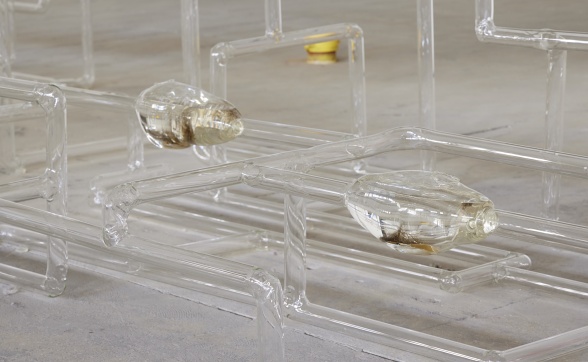Jes Fan

Jes Fan, Networks (series), 2020–. Installation view at Lewis's Building, Liverpool Biennial 2021. Photography: Stuart Whipps

Jes Fan, Networks (series), 2020–. Installation view at Lewis's Building, Liverpool Biennial 2021. Photography: Stuart Whipps

Jes Fan, Networks (series), 2020–. Installation view at Lewis's Building, Liverpool Biennial 2021. Photography: Stuart Whipps

Jes Fan, Networks (series), 2020–. Installation view at Lewis's Building, Liverpool Biennial 2021. Photography: Stuart Whipps

Jes Fan, Networks (series), 2020–. Installation view at Lewis's Building, Liverpool Biennial 2021. Photography: Stuart Whipps

Jes Fan, Networks (series), 2020–. Installation view at Lewis's Building, Liverpool Biennial 2021. Photography: Stuart Whipps
Jes Fan, Networks (series), 2020–. Installation view at Lewis's Building, Liverpool Biennial 2021. Photography: Stuart Whipps
Jes Fan (b. 1990, Scarborough, Canada) lives and works in Hong Kong and Brooklyn, USA. Fan originally trained in glass making, but has expanded his practice to encompass diverse mediums. His trans-disciplinary practice speculates on the intersection of biology and identity in relation to the materiality of the gendered and racialised body. Fan is the recipient of various fellowships and residencies, including the Joan Mitchell Painters and Sculptors Grant (2017), as well as the Jerome Hill Artist Fellowship (2019-2020). Recent exhibitions include Rockbund Art Museum, China (2019); Hayward Gallery, UK (2019); Empty Gallery, Hong Kong (2018); and Museum of Arts and Design, USA (2017).
Project Description
Jes Fan presented three new works at The Lewis’s Building titled Network (For Staying Low to the Ground) (2021), Network (For Survival) (2021) and Network (For Dispersal) (2021), as part of his series Networks (2020-ongoing). The sprawling new work takes the form of an entangled network of borosilicate tubing, punctuated with biomorphic forms. Fan’s sculptures are both a vessel and an interior body showing both the similarities and the differences between them. The sculpture is an incubator for black mould, which stands in for both a racialised fear of contamination, but also a sign of growth – a system of interspecies kinship. It describes a way of learning to care for what is not human.
Supported by Empty Gallery, Canada Council for the Arts, Hong Kong Economic and Trade Office, London, and The High Commission of Canada in the United Kingdom. Courtesy of the Artist and Empty Gallery.
Our full exhibition programme is now closed, but visitors can still enjoy art in person at FACT and Bluecoat until August & September. Plan your visit here.
Liverpool Biennial
55 New Bird Street
Liverpool L1 0BW
- T +44 (0)151 709 7444
- info@biennial.com
Liverpool Biennial is funded by
Founding Supporter
James Moores